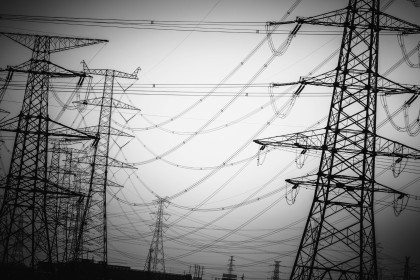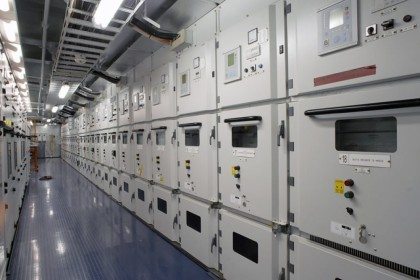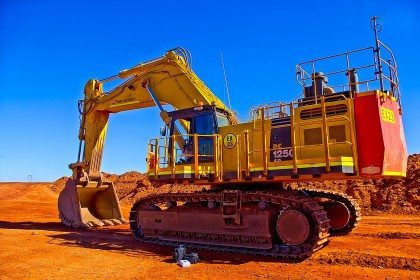WHAT IS CALIBRATION?
The most basic reason for calibrating an instrument is to ensure that it is reading accurately. This is done by comparing the Instrument Under Test (IUT), to a Calibrator of known output and high accuracy which is known as a ‘Standard’. Our Calibrators are extremely accurate, meaning they can act as a Standard for almost all electrical test and measurement instruments on the market.
When performing a calibration, we make a comparison between our Standard (Calibrator) and the IUT and record the results. These results are provided to the client along with Pass/Fail advice for each function of the meter. The Pass/Fail is given according to whether results are within the manufacturers’ advised tolerances or not.
Calibration is not the equivalent of using a check box or calibration box supplied by some meter manufacturers. These are simply function check boxes, the purpose of which is purely to ensure the meter is functioning. They do not confirm that the meter is reading accurately or within tolerance. They are also not accurate enough to act as a Standard as defined above.
Calibration is sometimes regarded as the process of adjusting the IUT so the measurement will agree with the standard, within a specified accuracy. This is not part of a standard Mobile Test ‘n’ Cal calibration, and is a separate adjustment service (or repair, if parts are required). This is the case with all reputable calibrators; a full calibration accurately confirms readings, followed by adjustment as an additional service if required.
WHAT IS HV (HIGH VOLTAGE) TESTING?
High Voltage Testing is the testing of electrical safety equipment using a HV Test Set. Each piece of electrical safety equipment has a Working Voltage Rating and a specified Test Voltage (higher than its working voltage). During test, we induce the safety item with a highly accurate AC Current, to ensure that the safety specifications are met. This is designed to simulate a real life situation where a worker may come into contact with live parts.
If there is a weak point in a piece of electrical safety equipment, the test current will “break” through the rubber and trip out our test set, registering a fail. If an item passes, we record the “Leakage Current” on the test report, which can be compared to previous reports to see if the item is deteriorating over time. If this “Leakage Current” is within the allowed tolerances of the applicable Standard, then the item will pass. Test results are recorded on a test report and are provided to the client, with a clear Pass/Fail marking. This Pass/Fail is to the applicable standard.
Testing insulation of gloves, mats, and other rubber insulated products by an insulation tester or similar meter is not in compliance with the regulations, and does not cover the requirements for regular testing.
WHY DOES IT NEED TO BE DONE?
In general terms; Calibration is critical to ensure equipment is both safe, and accurate. Electronic components drift as they are stressed with age. Without regular periodic calibration, the measurements made by these components are compromised, sometimes to the point where they pose a safety risk to the user. HV Testing is required by various standards and legislation on a wide variety of Electrical Safety Items and Personal Protective Equipment, in order to ensure they remain safe and are providing the level of protection that the worker requires. Almost all standards clearly state 6 monthly testing or inspection is required. In addition to this, Height Safety, Fall Arrest Equipment and Arc Flash Equipment also needs to be inspected by a trained inspector every 6 months, while Lifting or Rigging equipment needs to be inspected every 3 months.
In Queensland, under Section 22 of the Electrical Safety Regulation 2013; “a person conducting a business or undertaking must ensure that electrical work on energised electrical equipment is carried out by a competent person who has tools, testing equipment and personal protective equipment that are suitable for the work, have been properly tested, and are maintained in good working order. Failure to comply can result in a maximum of 40 Penalty Points”. The only way to ‘properly test’ electrical safety equipment and instruments is to perform full HV testing and calibration respectively. The Electrical Safety Regulation 2002 specified a six monthly test frequency, and this should still be followed in order to adhere to best practice, and minimise liability. This is also recommended by the National Electrical Contractors Association (NECA).
In Western Australia, the SACS document requires six monthly testing and twelve monthly calibration. In New South Wales, the ISSC14 document requires six monthly testing on all safety equipment. In New Zealand, EEA’s published safety guidelines require six monthly testing on all safety equipment.
For more information, please visit mastercalibrators.asn.au
WHAT NEEDS TO BE TESTED, CALIBRATED AND INSPECTED?
The above testing, calibration or inspection is required for any item that cannot be visually confirmed as working correctly, and includes, but is not limited to:
HV Tested:
- Insulated Gloves
- Insulated Mats
- Insulated Tools
- Insulated Torque Wrenches
- Rescue Kits
- Hot Sticks / Fuse Pullers
- Tiger Tails
- Portable Earthing Devices
- Elevated Working Platforms
- RCD Testers
Calibrated:
- Insulation Testers
- Multimeters
- Clamp Meters
- PAT Testers
- Multifunction Testers
- Voltage Testers
- Relay Test Sets
- Scope Meters
- Process Meters
- Power Quality Analysers
- Milliohm Meters
- Hi Pot / VLF Testers
- Battery Testers
- Decade / Self Check Boxes
- Loop Testers
- IR Guns
- Thermal Imaging Cameras
- Temperature Probes
- Thermocouples
- Pressure Gauges, Instruments and Calibrators
- Lux Meters
- Anemometers
- Flow Hoods
- Flow and Pressure Meters
- Torque Screwdrivers and Wrenches
- Tachometers
- Vernier Calipers
- Depth Gauges
- Humidity Instruments
- Hydraulic Crimpers
- Vibration Testers and Analyzers
- Decibel Meters
Inspection:
- Ladders
- Pole Platforms
- Harnesses
- Lanyards
- Pole Straps
- Davit Arms
- Lifting Slings
- Lifting Chains
- Arc Flash Clothing and Face Protection
Mobile Test ‘n’ Cal offers the vast majority of these services onsite, with the reminder conducted in-house at our advanced Laboratory. Contact us for an obligation free discussion about your equipment, or book online for your equipment to be taken care of by the experts.
Your Partner in Compliance… Mobile Test ‘n’ Cal











